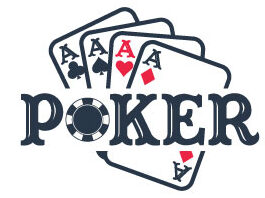Slow rolling is a term used in poker to describe the act of not calling or checking with the intention of later making a better hand. While it can be a strategic move, there are a few things you need to know about slow rolling before you decide to do it in your games.
What is Slow Rolling?
Slow Rolling is a term used in poker, generally to refer to the act of putting money into the pot slowly over time in order to gain an advantage. The theory behind slow rolling is that doing so will make other players less likely to call, raising, or fold, since they will believe that you are not committed to the hand.
There are a few key things to keep in mind when slow rolling:
– Slow Rolling should only be used as a last resort – if all other options have been tried and failed, it’s time to take your chip stack and go.
– Always be transparent about your intentions – let your opponents know when you’re going to slow roll, and what your reasoning is. If they can predict when and how you’re going to put money into the pot, they’ll be able to adjust their play accordingly.
– Don’t slow roll just because you think someone is weak – this could backfire if the other player decides to fight back and makes a more aggressive move. Use your judgement wisely!
The Pros and Cons of Slow Rolling
When it comes to slow rolling, there are pros and cons to consider. On one hand, slow rolling can help you gain an advantage in the long run. By playing slowly, you can wear your opponents down and eventually get them to fold or call with weaker hands. Plus, by playing cautiously, you minimize the risk of getting trapped in a pot with a bad hand.
However, slow rolling also has its own set of risks. If your opponents sense that you’re not really committed to winning the hand, they may take advantage of that by playing more aggressively. Additionally, if you wait too long to win a pot, your opportunity will have passed and you will likely lose money on the hand.
Ultimately, the decision of whether or not to slow roll is up to each individual player. As long as you are aware of both the benefits and risks involved, you should be able to make a decision that works best for you.
When to Slow Roll
When to slow roll in poker can be a bit confusing, so we’ve put together a list of tips to help you make the right decision:
-First and foremost, always remember that slow rolling is a strategy, not a rule. There are times when it is appropriate to slow roll, and times when it is not. The key is to use your own judgement in each situation.
-Before you slow roll, make sure you have a good reason for doing so. If you’re not sure whether or not slow rolling is the best option, ask yourself if the potential gain from holding is worth the potential loss from losing the hand.
-If you decide to slow roll, be patient. Don’t try to win the hand back immediately; wait until later in the hand when your opponent might be more likely to fold.
-Finally, don’t forget about your opponents. If they see that you are slowly rolling them, they may become more aggressive and try to take advantage of that fact.
How toSlow Roll
If you’re new to the game of poker, you may be wondering what slow rolling is. Basically, slow rolling is a strategy that involves playing slowly at first in order to lure your opponents into making mistakes. You can use this technique to gain an advantage over your opponents by knowing when and how to slow roll.
Conclusion
Slow rolling is a very strategic play in poker that can often result in big profits. If you’re new to the game, or if you’re not sure how to slow roll effectively, read on for some helpful tips. By understanding how slow rolling works and using it to your advantage, you can see yourself making some serious money over time. So put on your poker face and get ready to slow roll!






More Stories
Round of 32 match versus Monteiro (+190). Tennis odds courtesy of Tipico Sportsbook
Kentucky Derby Day Countdown Begins, 20 Horses Down to Party
Miami Heat’s Jimmy Butler Injury Will He Play In Game 4?